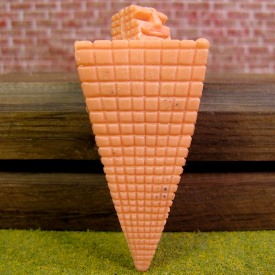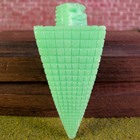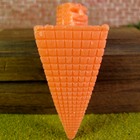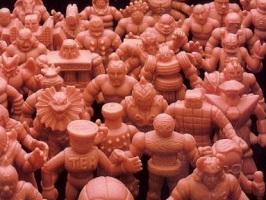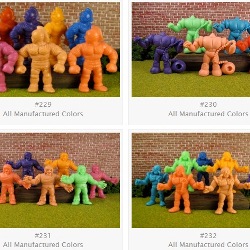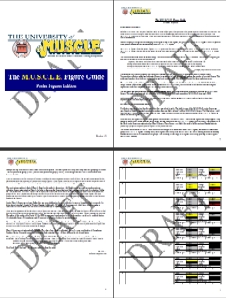 On December 23rd, 2009 I publically shared what I considered to be a draft version of a M.U.S.C.L.E. figure guide. Arguably, the most important statement was:
On December 23rd, 2009 I publically shared what I considered to be a draft version of a M.U.S.C.L.E. figure guide. Arguably, the most important statement was:
This guide was never designed as a price guide and should not be used as a price guide.
Since 2009 the classifications have been widely accepted and used. The labels of Class A, B, and C for poster figures are a significant part of the M.U.S.C.L.E. collecting lexicon.
The adoption of the language is incredibly satisfying because the guide was conceived as a tool to provide a balanced, realistic view of M.U.S.C.L.E. figures. I wanted to take the mystery out of collecting M.U.S.C.L.E. figures.
Knowing which M.U.S.C.L.E. figures are more difficult to find should not be a privilege. I believed, and continue to believe, that information should be an easy thing for anyone to know. I hoped the guide would be something like a “Freedom of MUSCLE Information Act.”
But as the classifications entered the lexicon their definitions were misunderstood and/or misused. One of the worst offenders in perpetuating the misunderstanding is musclefigures.com.
To be 100% clear, this is not meant to vilify Loz. He is a perfectly nice guy and we have had nothing but pleasant interactions. However, his website has a great domain that reintroduces many people to M.U.S.C.L.E. figures. The information provided on his site is ultimately rationale for the store’s pricing. And the store is the main purpose of the site.
Musclefigures.com defines Class A as:
Class A figures should not really be considered rare, but rather ‘uncommon’. As they do not show up very often they were most likely manufactured towards the end of M.U.S.C.L.E. production, thus the lower numbers in circulation. It is also safe to assume that they were mainly produced in Canada and the UK, further shrinking their numbers. Some collectors think that Class A figures should be classed as rare and indeed some figures truly are (Purple #153 for example). Even the less popular sculpts can command significantly high prices if it is a Class A colour.
There are numerous problems with the statements in that definition. I have bolded the sentence which I feel is the most egregious. M.U.S.C.L.E. figures were never produced in Canada or the UK.
It never felt necessary to correct or address any of this misuse. Strangely it was this comment that made me feel like I should re-address the original intention of the classifications.Class C: (Directly from the original guide)
These are the figures that always appear. They appear at garage sales, online auctions, resale shops, and any other place that M.U.S.C.L.E. figures could be found. For example all of the Flesh poster figures are categorized as Class C figures. These figures were likely the result of all the assigned Bandai factories producing a properly assigned quota of figures (a full production run).
Class B:
There is a explanation in the guide, but very simply these should NOT be thought of as “more rare” than Class C figures. Class B is ultimately a transitional group of M.U.S.C.L.E. figures. These figures could easily slide into a Class C or Class A ranking with enough additional objective data. With enough hard data the Class B classification could become obsolete.
Class A:
Class A does not have a neat and clean definition, because it is an idea. The core of the idea is that Class A figures are not rare. Based on Mattel’s standard operating procedures there are likely at least 9 million M.U.S.C.L.E. figures. Some estimates actually put the potential number of M.U.S.C.L.E. figures at almost 500 million figures.
Additionally, the popularity of some sculpts were considered – most notably the Purple #153. This figure continues to appear with more regularity. There will always be collectors looking to obtain it. The supply will never meet the demand, which makes it more difficult to procure.
The goal of the UofM figure guide was never perfection. It would be an impossible task to achieve objective perfection. However, the guide does help to any person that needs information about M.U.S.C.L.E. figures to have a functional knowledge of the figures.
Ultimately the guide is a tool; intrinsically neither good nor bad. Negatively, it can be misused by sellers trying to gouge buyers with outrageous price. Positively, it can be used by collectors to understand the hobby and avoid being taken advantage of during a M.U.S.C.L.E. figure transaction.

